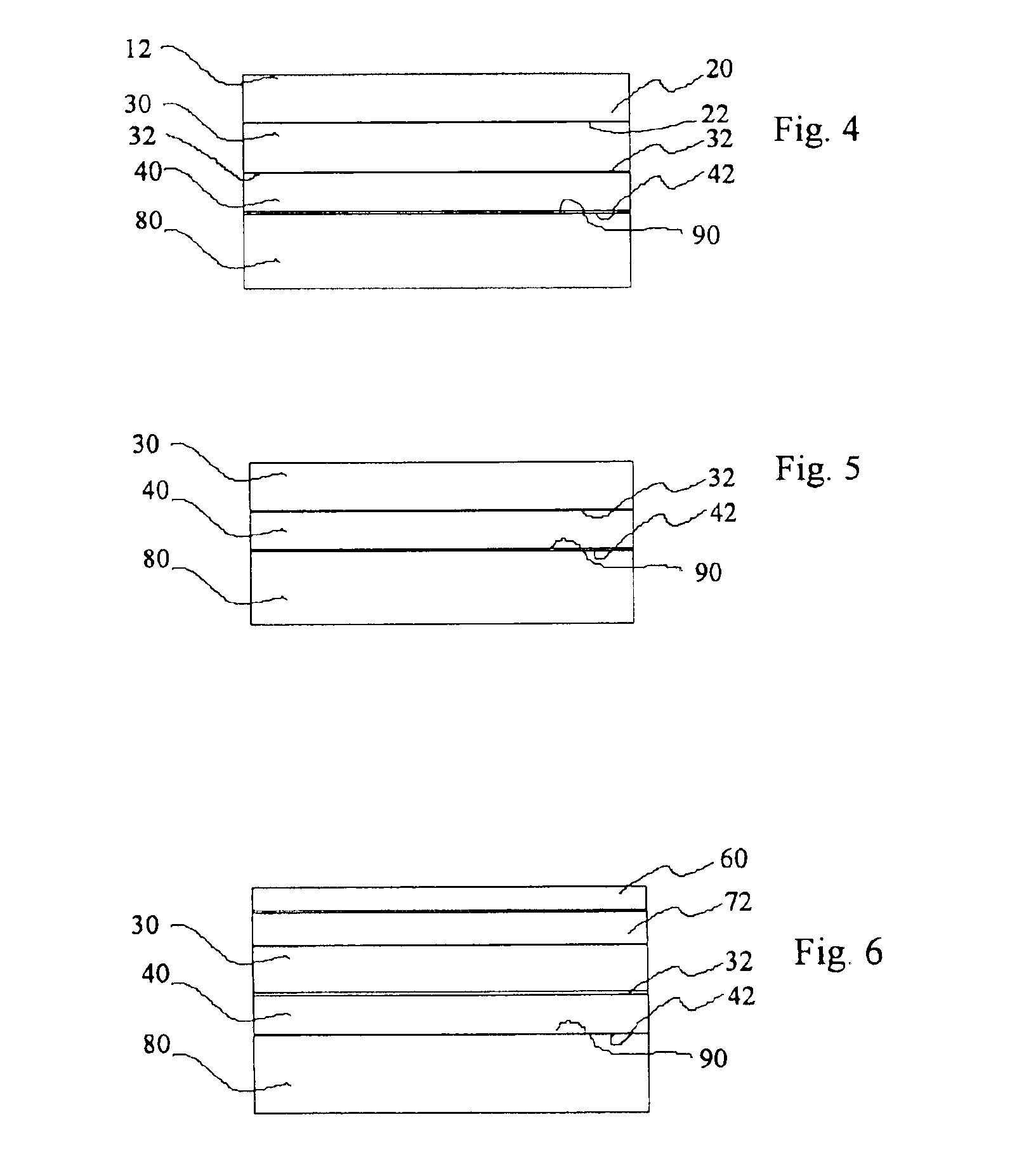Layer transfer of low defect SiGe using an etch-back process
- Summary
- Abstract
- Description
- Claims
- Application Information
AI Technical Summary
Benefits of technology
Problems solved by technology
Method used
Image
Examples
Embodiment Construction
[0017]The embodiment which will now be described in conjunction with the above drawings relates to the formation of a layer of monocrystalline strained Si / SiGe on an insulator material (SGOI) or a SiGe layer on Si with the aid of planarization of surfaces, wafer bonding and a selective wet etching process using SiGe as the etch-stop layer.
[0018]The top surface of layer 40 shown in FIG. 1 is turned upside down and bought into intimate contact with surface 90 of substrate 80. The two surfaces 42 and 90 are brought together by the wafer bonding approach. The bonded surfaces of 42 and 90 are annealed at a temperature in the range from about 20° C. to about 500° C. for a time period in the range from about 2 hours to about 50 hours. Another embodiment, as shown in FIG. 7, uses at least one intermediate agent layer 100 such as Ge, or metal materials which either have a low-melting point or react with silicon to form a silicide such materials may be tungsten (W), cobalt (Co), titanium (Ti)...
PUM
 Login to View More
Login to View More Abstract
Description
Claims
Application Information
 Login to View More
Login to View More - R&D
- Intellectual Property
- Life Sciences
- Materials
- Tech Scout
- Unparalleled Data Quality
- Higher Quality Content
- 60% Fewer Hallucinations
Browse by: Latest US Patents, China's latest patents, Technical Efficacy Thesaurus, Application Domain, Technology Topic, Popular Technical Reports.
© 2025 PatSnap. All rights reserved.Legal|Privacy policy|Modern Slavery Act Transparency Statement|Sitemap|About US| Contact US: help@patsnap.com



